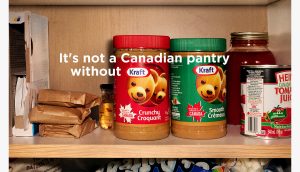Bell Media president Sean Cohan isn’t going to let a challenging economic landscape deter him from expanding the business’s reach globally.
Speaking to Playback Daily, MiC’s sister publication that covers the Canadian screen industry, Cohan says he joined the company because he thought its media assets are “globally unique,” and, since joining, he’s only seen that potential grow. On the digital side, the company recently reported a 19% year-over-year revenue growth.
Cohan joined Bell Media last November, succeeding former president Wade Oosterman, who retired at the end of 2023. Cohan’s past roles include president, international and digital media at A+E Networks, and chief growth officer and president at data analytics company Nielsen. He is also a board member of the Banff World Media Festival.
His time has already been marked with challenges. Parentco BCE announced an estimated 4,800 job cuts across the company, citing regulatory pressures and revenue losses, though less than 10% impacted Bell Media. But Cohan felt the cuts: “We don’t take [job cuts] lightly,” he says. “It’s been a tough couple of months. We made some tough choices as a reflection of some of the economic challenges.”
“The [goal] is great content, making direct-to-consumer and Crave work, and being ubiquitous digitally. It’s not going to be easy and there will be some things we’ll have to do to accelerate our transformation to reflect the new world.”
This interview has been edited and condensed.
How has the transition been these last few months since joining Bell Media?
They’ve been good. I would say, you know, not easy. It’s a tough time in the global media environment and it’s a challenging time here in Canada. In addition to the media ecosystem and the ad market evolution being a little uneven, you’ve also got an economically challenging time for consumers with inflation.
I would say I joined [Bell Media] in part because the assets, the brand and the content were all pretty globally unique. Those assets are as good as I thought they were, maybe even a little bit better on the margin. I feel like we’ve got some clear challenges, but potentially clear wins in the future.
What do you think some of those wins could be?
This is not a PSA for Crave, but I think Crave is a strong streaming service with a fair bit of great content. It’s got good traction, but I think it can be much bigger from a distribution perspective. To thinking through content mix, marketing, broader distribution – like what you saw us do with Amazon and Crave – and specifically what we do to raise the penetration of Crave in Quebec, I think there could be a fair bit of progress.
We produce a lot of French content and just making that content more visible, more discoverable. I think there’s some room for growth there.
Another [lane for growth] is just broader digital distribution. And that’s not Crave-specific, that’s everything… We’ve reached 31 million Canadians a month with our linear content. But what we can do even better is reach consumers where they want and demand content.
The Amazon and Crave [deal] is one, but these free ad supported TV (FAST) channels are not a place where we’ve played before, but they are place that we should play with a range of sports, news and entertainment content. I think there’s some wins to be had on the content front … thinking through where we might take a little bit more creative risk.
You have a strong background in digital media. How do you think that has served you in this role?
I’ve been a leader in and around the content business with a real focus on getting the content right. This is the lifeblood of what we do.
The long experience [has been] with global content-driven businesses and taking brands to new geographies and really scaling brands and products. There’s a growth and transformation orientation to almost everything I’ve done. A+E was a very U.S. set of brands, so the CEO said to me, ‘well, let’s make it global.’
When I was at Nielsen it was transforming an old-school measurement service to try and measure consumption across platforms, transform the ownership, and so on. So, in addition to the long track record in media and growing media businesses, it’s change and transformation and driving growth.
You mentioned FAST channels as a potential win. What are some of the key priorities for Bell Media in the FAST space?
We’ve got players like CBC and other competitors that have played in the space. In the U.S., I was pretty active in launching FAST channels with a prior company. I like the space. I view it as another platform or another arena or way to reach a different audience, frankly, than the specialty TV audience. I think of it as, typically, an audience that’s seeing it as one of the first screens on their connected TV or connected devices.
We’ve got an announcement coming where we’ll launch channels in the FAST space, and not one or two. We’ll do it across the genres that we represent; we’ll do it with partners, we’re not just going to put it out in the ether.
We’re hopeful about the development of the FAST space in Canada. It’s a little more nascent than maybe in the U.S., and I don’t believe that it’s going to be enormous relative to the single specialty category or some of the other places we play. But it’s an example of wanting to bring our stories to where we think they’ll resonate to audiences where they demand content.
Image courtesy of Bell Media























